#scandinavian royalty
Text
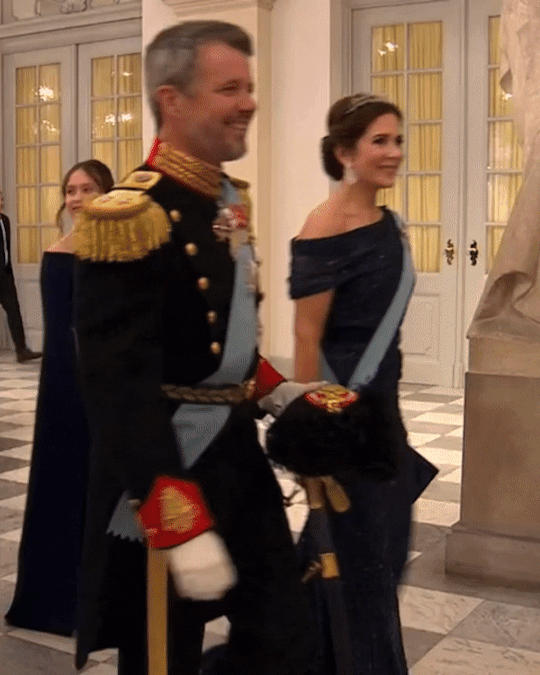

Princess Josephine of Denmark, ever the professional as she attends her eldest brother Prince Christian of Denmark’s 18th birthday gala, swiftly recovers from tripping on her dress on 15 October 2023
#my gifs#prince christian#princess josephine#crown prince frederik#crown princess mary#princess isabella#prince vincent#danish royal family#scandinavian royalty#fashion and style#royal aesthetics
166 notes
·
View notes
Text
Denmark's Historic Royal Transition: Queen Margrethe II Abdicates After 52 Years
Denmark prepares for historic royal transition as Queen Margrethe II steps down
Denmark will witness a historic royal transition on January 14, 2024, when Queen Margrethe II, the longest-reigning monarch in Europe, will abdicate the throne after 52 years. She will be succeeded by her eldest son, Crown Prince Frederik, who will become King Frederik X of Denmark.
Queen Margrethe II, who turned 83…
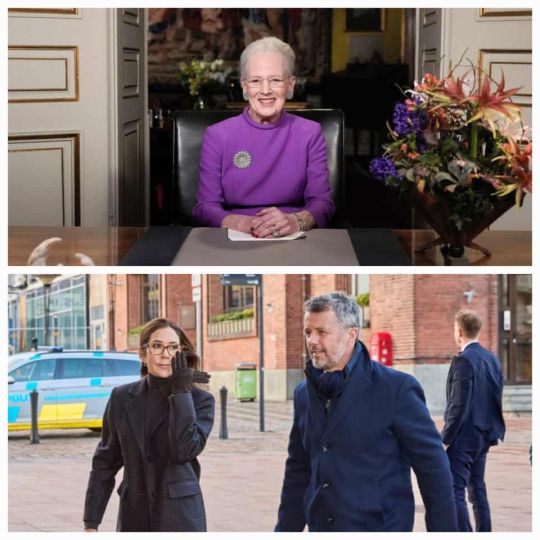
View On WordPress
#Constitutional Monarchy#Crown Prince Frederik#Danish history#Denmark monarchy#Historic abdication#Kingdom of Denmark#Monarchy succession#Queen Margrethe II#Royal transition#Scandinavian royalty
8 notes
·
View notes
Text

Hello anon! 😁 Something weird was happening with your ask, so I made a screenshot of it, hope you see my answer!
Believe it or not, but minutes can make you a heir and leave your brother/sister to despair for the rest of their lives (or vica versa lmao) 🥲 Jk jk, but yeah they just look at who is older indeed! Vincent is 26 minutes older than Josephine I think so he is 4th in the line to the throne and she is right after him. Life sucks...
check on the drf website (x)
#danish royal family#drf#princess josephine#prince vincent#line of succession to the throne#danish royalty#scandinavian royalty#answered#nonnie
3 notes
·
View notes
Text
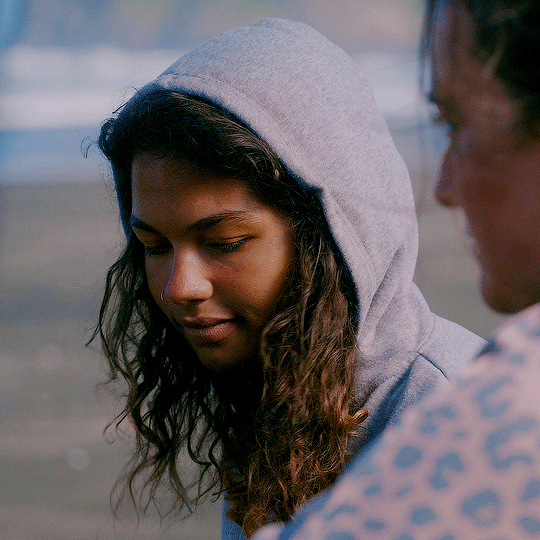


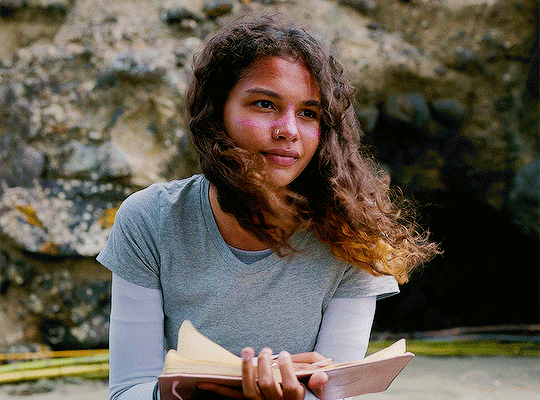



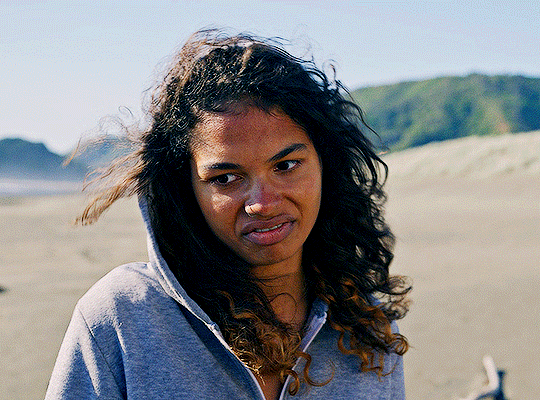


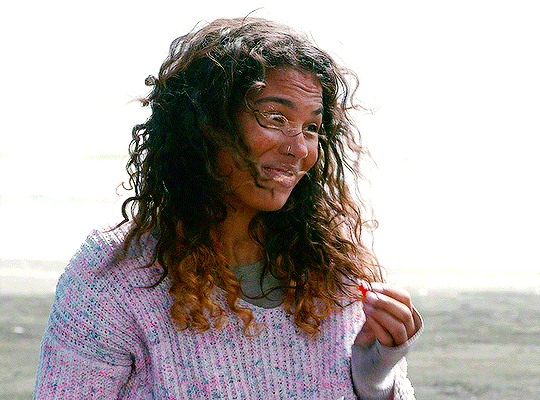
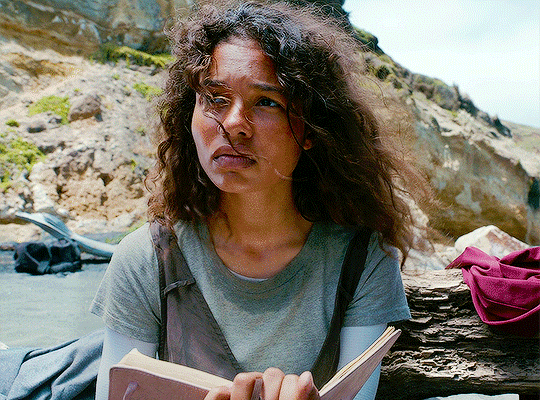


#Helena Howard#royalty#scandinavian#black#mixed#brunette#light skin beauty#gorgeous#long hair#woman#hot#body#tight#pretty#cute#Queen#amazing#gif#GIFTASTIC#lovely
2 notes
·
View notes
Text
i’ve been thinking a lot lately about the way my ethnicity affected the way i was gendered as a child, my drive to transition, and even my detransition…
as a hispanic growing up with my white mom and white stepdad and white brother and white extended family in scandinavian hell (minnesota), i always felt different, always felt wrong. (my parents divorced as a baby, and my dad and his family, cuban and italian, all live in florida.) my neighborhood wasn’t so bad; it was way more diverse than the metro area itself. growing up i had mixed friends, i had friends with curly hair… but us trailer park kids were only a fraction of the population of our schools and district. a sea of blonde hair. there were times in elementary school i would literally pray to god to make my hair straight, make my eyes blue. grown-ups touched my hair and always asked “is it naturally curly?”. my classmates urged me to straighten it and by age 13 it was part of my ridiculously time-consuming “feminizing” beauty rituals.
much earlier, by the age of 8 or 9, i already had thick, dark hair growing on my legs. other kids, boys and girls alike, called me “gorilla girl”, faked gagging when i wore shorts, insisted i was actually a boy. that one became more and more common as i came into my personality: bold, class clown, competitive with the boys. (always wanting to charm the girls, but i didn’t recognize that back then.)
my mustache was there by 8, as well. just a little peach fuzz above my lip but dark enough to notice. are you even a girl? my mom would spread wax over her own face and soon began waxing my stache as well. it hurt so badly. i put up with it because she said it would make the kids stop teasing me. of course i was a girl- she was a woman and she had peach fuzz too!… but i felt self-conscious at the fact that my body hair was so much more noticeable, even as a child. my mother’s hair is very thin, straight, lighter brown; her complexion is warmer than mine, pink where mine is olive, green and yellow. i worried you could see the strands about to burst through. i was worried that to be a girl- a woman- i must hide parts of myself every day. i must cover the shoots of grass, the weeds that reveal that i’m not fit for society, that whisper i’m wild and untamed.
it wasn’t actually until i was 18 at least that i actually started to consider myself latino. i had sometimes said ‘hispanic’ growing up, as that’s what my family in florida called themselves; they referred to themselves as “spanish”, which i found out was not quite true after compiling my family tree and discovering that those ancestors emigrated from havana. in their minds they were white: “descended from spanish royalty” (as if!!)… i had spent my youth constantly trying to claim solely whiteness, confused as to why everyone was asking me “are you mexican?” “are you jewish?” “are you middle eastern?” - even though inside i think i knew. i knew my family didn’t look like me. i resented my surname being changed to Lind when i was five, my stepdad’s name, in order to give me the same name as the rest of them. despite my apparent envy of swedes and norwegians i knew it wasn’t my name; i still stood out terribly. i glared at myself in the mirror every day, i never could move past how the kids at school said my eyes were the color of shit, that my hair looked like pubes, that i must have had a sex change without being told because that would explain the mustache, the aggression…
by the time i was fourteen i was entirely primed to accept an alternative explanation to what was “wrong” with me. my sexuality was becoming more and more apparent but before i could ever come out as lesbian or even bi, i had discovered what it meant to be trans. i was so immediately certain that this was the key, THIS was why everyone said i didn’t fit in, THIS was why my behavior wasn’t girly, THIS was why i wanted to date girls. it was 2011, still deep in the “brain sex” era of the trans community, and i was sure without a shadow of a doubt that i was physically female, mentally male. all that needed to be done was to “correct” my body and bring it in line with my brain. despite the fact that very few people knew what transition actually was back then, i genuinely assumed it would make sense to everyone else, too: they had told me i wasn’t ‘really’ a girl so many times i had no trouble believing it.
transition, of course, did not suddenly de-latinize me LOL. first i became a total Other, outside of both the minnesotan ethnic norms and the gender+sex norms; eventually, with hormones and surgery at a very young age, i was able to pass as a boy, but by the time i could grow actual full-on facial hair, i realized i was still the pan-latin american enigma to people around me. multiple times someone would call me “sanchez” as some sort of attempted insult or joke. police looked at me differently than they had before. shop owners followed me, accused me of shoplifting. and sometimes, the white girls i dated told me that i was way cooler than all the boring white boys they knew. one girl even called me “exotic” to my face. it was, apparently, a compliment.
when i was 21 i heard that my girlfriend had referred to me to others as “a POC who identifies as white”. it felt as though she didn’t even know me at all. i’d never claimed either of those things to her.
moving to the west coast (socal specifically, where being latino/a is not considered ‘abnormal’) illuminated a lot of the bizarre and unnatural racial expectations of my midwest upbringing; i think by this point i was beginning to realize what so many things from my childhood had meant. that they weren’t really saying i was a boy. they were saying we don’t like girls who look like you, and we’d rather not have you included in our category.
it took me another three years to fully reckon with this. by the time i decided to detransition i had a much better understanding of the circumstances of my life; conversations with close friends who are also latina and have walked similar paths to me, heard similar insults, similar “compliments”, opened my eyes to the fact that i was not alone. i no longer feel weird for thinking the race/ethnicity boxes on government forms are hopelessly reductive. i know who i am and who i am not.
(around this time, i happened upon some old pictures of my dad’s side of the family. beautiful and glamorous women: adela, my uncle’s mother, the piano player; melanie, my aunt, the wife, hostess, and addict; lauren and andrea, my cousins, the restauranteurs; stella, my dad’s mamma, the widow and matriarch. and on all their faces, thick dark eyebrows, and, yes, that ever-familiar peach fuzz. i swear it healed something in my soul. despite my lack of beauty and glamor, we are not so different after all.)
that’s not to say all things are easy now. i’ve spent three years living as a GNC woman and if that wasn’t enough to confirm most all of my hypotheses on people’s perceptions of me, i don’t know what is.
detrans spaces (like most trans spaces) are overwhelmingly white- or at least that’s who dominates conversation. i see SO much downplaying of the things that naturally hairy women go through societally. i see trans allies who purport to be “okay” with detransitioners, saying “what’s the big deal? if you took testosterone you can just go off it and get laser hair removal!! :)” as if laser isn’t expensive as hell, painful as hell, and also WAY more of a process for a woman with dark curly hair than it is for one with straight blonde hair lmfao!!! i see detrans women obsessed with removing all traces of hair from their bodies (even though most of them clearly don’t have a neverending five o’clock shadow like some of us do! my lower face has a constant blue-green disturbance under the surface which makes female spaces incredibly daunting) and insulting the rest of us for being ugly and hairy and making no effort to look like women or what the fuck ever. basically, a lot of people who claim to support us are just racists and essentialists and believe that sex is visual and not biological…🤨
anyway… i guess my main takeaways from all this are:
1. please stop acting like detransition is an entirely internal process and that it’s easy for all of us to be seen as our sex again (some of us like. actually transitioned and passed as the opposite sex), or that potential physical interventions aren’t incredibly invasive and difficult
2. stop assuming all transition and detransition journeys follow your own experience of lifelong whiteness and hairlessness
3. it is a distinct experience to be regularly de-gendered or denied your sex, PRIOR to ever thinking of yourself as literally trans. many trans/detrans people had this happen to us (we were once the vast majority of trans people). but many did not, and generally shock others when they begun breaking gender norms. i really think people from the second group often have trouble understanding that for the first group, changing gender expression is basically a bandaid over an abscess… we have lived entire lifetimes being denied our sex, being told our bodies are not “truly” ours, that there is someone else inside trying to break out. kicked out of the bathroom, the changing room, alienated from single-sex peer groups. transition just flips this experience and instead separates us from our preferred gender group, reinforcing the feeling that we have no place, anywhere.
race/ethnicity, being homosexual or bisexual, mental illness stigma, disability, and low economic class all play an additional role in this. stop perpetuating this and denying us our biological sex.
#this is a toooootal rant lmao sorry but its been on my mind for a while.#kind of a culmination of two posts ive been wanting to make#detrans#detransition#ok to reblog
239 notes
·
View notes
Text
Things Elvis and Prince Eric have in common
1. The obvious. They looked like this for a starter: gorgeous head of black hair, baby blue eyes, beautiful smile. They were sensitive, charming men who brightened up the day of whoever happened to be with them. Oh, and they were both royalty in a sense.


2. They both liked deep V on their shirt. Thanks @xanatenshi for pointing this out first.


3. And at least once in their life they wore a uniform with epaulettes that looked extremely good on them and it still makes girls swoon.
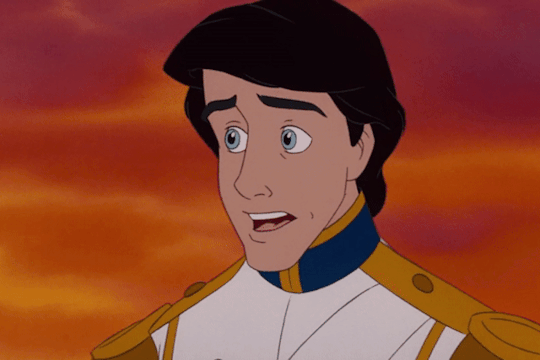

4. They both liked doggos, especially big ones.
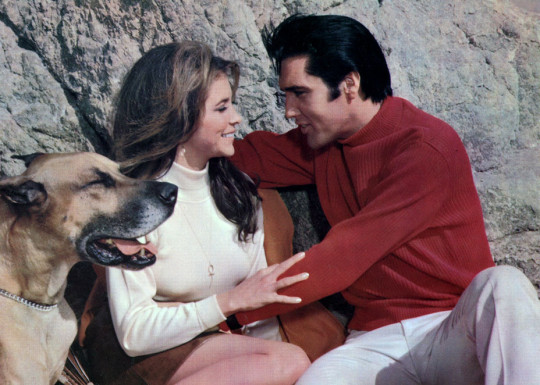
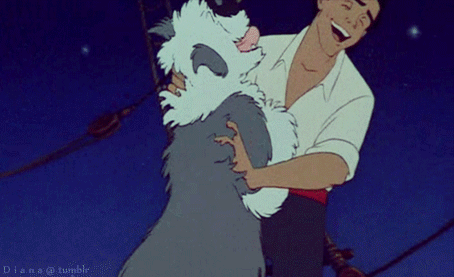
5. Now follow me.
“The Little Mermaid” is a Scandinavian fairy tale about a redhead who falls desperately in love with a prince from another realm, but there are obstacles in front of her that are forcing the prince to marry another woman. Does it sound familiar?
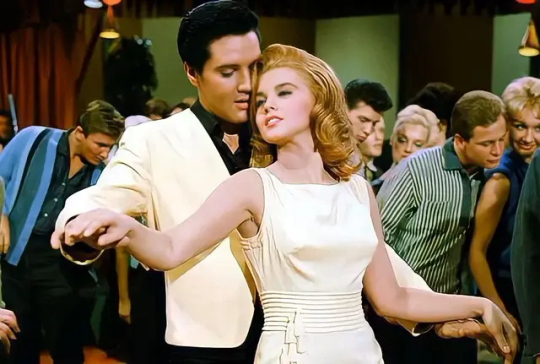

Too bad it ended up differently for Elvis, like it did in his movies. Gotta find proof of you-know-who’s witching powers now… (I’m just joking, of course 😂)

6. And because Elvis wasn’t monogamous, there was another Scandinavian mermaid he kinda fell in love with, on the set of “Live a Little, Love a Little” in 1968. Thanks @moonchild-daniella for letting me know that Susan Henning is also half Swedish. Look how she’s trying to steal him from Ariel, or whoever the Tagesdame who kept him up all night was at the time.
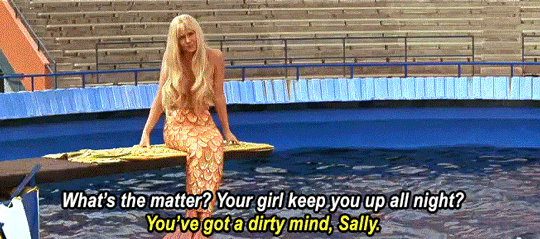
This is the girl from the famous bordello scene from the Comeback Special, with whom Elvis had an affair, if you didn’t know.
BONUS: Prince Eric on pills 🫣😂

I’m seeing myself out. Bye.
56 notes
·
View notes
Text
some modern girl falls into middle earth concepts (the hobbit & lotr)
reader has a gold tooth or two, obvs the company is interested but what happens when thorin gets that gold sickness lmfao
reader has hella tattoos/piercings/body mods (tatted eyeballs, pointed ears, split tongue, fangs, etc) and explains the process to the company (maybe dwalin gets the hots). this is, of course, after the company finds out reader is in fact human and not some odd race they've never heard of
black or native american reader (bc u know how dwarves & elves are with hair)
reader who speaks norwegian and has studied norwegian history (bc why not) and likes to draw comparisons between scandinavian culture and dwarven culture (idk why lmao)
italian reader (bc food)
reader with dai yueqin-length hair (aka if its not up its a tripping hazard to everyone)
reader who's a part of the sca
deaf!reader (maybe bifur's sign language is similar to asl and they end up becoming friends)
blind!reader (reader likes touching faces, im just imagining reader touching one of the dwarves' faces and being like "oh wow ur very handsome", maybe reader likes bigger noses, bigger ears, longer hair, and beards bc they feel interesting as opposed to a clean-shaven face and smaller features)
reader with a beard fetish (*everyone looks at nori and his glorious beard*)
stoner reader who, after falling into middle earth, found themselves constantly stoned stupid due to eating a brownie before the fall (and by some weird magical thing, their body is now "glitched").
alternatively, stoner reader who had seeds on them before they fell.
metalhead reader (specifically eddie munson-style...so thrasher obsessed with dnd).
crackfic idea: introducing the dwarves to diggy hole (lmao)
reader, who's obsessed with stories, tells the company a different story from their home world each night (like a story about a young viking managing to train the most ferocious dragon (how to train your dragon)). later, reader ends up retelling snow white and the seven dwarves.
some sort of bl2 x hobbit crossover (reader's a siren but not from the borderlands universe, and in this case their magic is more like pony magic from mlp friendship is magic or bonnies magic from vampire diaries). they dont get any markings or anything until they "leech" the gold sickness from thorin (which, in turn, affects the reader by making their powers more awesome). obvs there's some limitations (they lose the ability to fully control their limbs and are pretty much wheelchair-bound for a few months). reader is pretty much a demigod (probably just as powerful if not maybe a little less powerful than gandalf).
reader fell into middle earth a couple thousand years ago but due to some weird aging thing and middle earth time working differently than modern earth time they age differently. they've become some minor witch or wizard.
reader "scent marks/chins" to show love (like a rabbit)
reader whos part of modern royalty from our world (and enjoys middle earth more than anything bc they don't have to be "propper" all the time, maybe their more of a princess diana royal)
speaking of princess diana: reader gushes over princess diana
post botfa: fem!reader flirts with dis (lol)
reader pretends to by psychic (like in psych) but in reality they've read every book part of the lotr/hobbit universe and know everything (maybe they understand some of their languages as well, not enough to be fluent but enough to pick out certain words)
reader grew up DEEP in the mountains of west virginia (and likes to sing country roads at random points, though they change some of the lyrics bc they don't have the crayons nor willpower to explain a radio)
reader knows "big bad john" and "the cajun queen" by jimmy dean by heart
reader quietly singing jolene after the events of mirkwood
reader lives life by the kenny rogers song "the gambler"
most of the songs the reader knows are either by dolly parton or kenny rogers (or any other artist similar like reba)
reader casually talks about the horrors of our world like its the most normal thing (ww2, systematic racism, the truth of thanksgiving, climate change, 2020, the patriarchy and how they treat women, etc)...everyone looks horrified
reader writes hozier-style songs
reader is the biggest fucking flirt (but by that, i mean they'll flirt with trees...not just ents, no, trees...and rocks)
reader, a seemingly innocent-looking woman, was a deathmetal vocalist in our world
reader has a thing for watching blacksmiths and metalsmiths (i used to like watching forged in fire until i realized they were a bunch of sexists)
reader has the deepest southern accent-
reader is a little insecure only to find out that everything society deems gross and unsightly in our world is hella attractive to dwarves (body hair, extra weight, etc)
reader has abandonment issues and is terrified the company or fellowship are gonna abandon them at any point
reader introduces the company/fellowship to truth or dare, reader get's dared to tell the group their biggest secret, they pull out their childhood stuffed animal from their bag and introduce the group to said stuffed animal. reader thinks the group will laugh at them. the fellowship finds it endearing. the company also finds it endearing (esp dori, bifur, and bofur).
reader goes on a tangent about frontal lobes for a solid 15 minutes straight with no stopping bc of that one hyperfixation they had a few years back.
reader with chronic pain. they never talk about it but something goes wrong, reader and (we'll say dwalin) switch bodies. the pain is so bad dwalin is keeling over and after they get switched back everyone has a little more respect for reader than before. ("what do you mean tHIS IS NORMAL EVERYDAY PAIN? YOU MEAN TO TELL ME THIS FLARES UP AND GETS WORSE??? THIS ISNT EVEN THE WORST OF IT???" reader shrugs "eh u get used to it after living with it for ur entire life")
reader doesn't like wearing shoes, but has feet as strong as a hobbits so its fine
everyone's explaining what folktale they tell children in different cultures when asked where babies come from. the dwarves talk about being born of rocks, hobbits talk about being born in gardens, the human reader tells the story of the stork
idk i kinda wanna mix some of these together
95 notes
·
View notes
Text
Looking up CV names' meanings :)
Joachim: Established by God (Hebrew)
Walter: Commander of the army / Powerful warrior / Ruler of the world (derived from Old High German Walthari)
Leon: Lion (Greek. Fun fact: its meaning is said to be steeped in heroism and bravery)
Mathias: Gift of God (fucking LMAO) (Hebrew)
Elisabetha: My God is an oath, my God is abundance (Hebrew)
Rinaldo: Ruler's advisor (Latin/German)
Sonia: Wisdom (Greek)
Trevor: Great (or large) settlement / The large village / Wise (Welsh)
Or
Ralph: Wolf counsel / A courageous counselor (Scandinavian)
Dracula: Son of Dracul / The devil (Romanian)
Isaac: He will laugh, he will rejoice (or "one who laughs or rejoices") / Laughter (Hebrew)
Julia: Youthful (Latin)
Sypha / Syfa / Cipher: The sword / Caring, Master of their own destiny, charisma / Freedom-loving, free-spirited individual (???)
Hector: Steadfast / To have / To hold / To possess (Greek)
Rosaly/Rosalie: Rose / Rose garden (French, derived from the latin word for rose)
Grant: Tall / Big (ARE YOU SURE ABOUT THAT) (English, French and Scottish)
St Germain: Holy Brother (French)
Christopher: Christ bearer / Christ within (Greek)
Soleil: Literally the french word for "sun" (...french)
Simon: To hear, be heard / reputation (Hebrew and Greek)
Juste: Just, upright, righteous (french, literally, like Soleil)
Maxim: Greatest (Roman)
Lydie: The seller of purple / (a maiden) From Lydia (French)
Richter: Judge / To make right (German)
Maria: Beloved / Bitter / Rebellious (Latin)
Annette: Grace / Favor (French)
Shanoa: Black cat (Castlevania???)
Albus: White (lol) (Latin)
John: God is gracious (English)
Eric: Sole ruler / Eternal ruler (Old Norse)
Elizabeth: God's promise / God is my oath (Hebrew)
Drolta: Knowledgeful / Inventive / Elegant (??)
Nathan: Gift of god / He gave / Given (Hebrew)
Hugh: Soul / Mind / Intellect (British)
Camilla: Servant for the temple / Free-born / Noble (Latin)
Jonathan: God has given / Gift of God (Hebrew)
Charlotte: Free man / Petite (French)
Julius: Youthful / Downy; soft and tender hair (Latin)
Yoko: Sun child / Ocean child / Good, positive child (Japanese)
Soma: Lunar nectar /Moon (Indian, though its mostly feminine) / Creation, genesis, origin + truth, reality, genuine (Japanese, can't find one precise meaning) (It can also have a Hungarian origin wich in this case means "dogwood tree" lmao)
Mina: Royalty (Greek) / Protection/Protector (German) / Eternity, permanence (Japanese, chose the simplest meaning but i'm not even sure about it because. Kanji. Someone help)
Bonus: Belmont means Beautiful Mountain in french <3 (very fitting)
Feel free to add more! Or correct me because some of them were very confusing to me :')
#it started as just wanting to look up Joachim...#and now look at this.#also had to re-write it all because Phone decided to be a bitch and restart while I was writing <3#uuuurgh.#anyway.#everytime I see CV elements finding their origin in France I get a little happier#castlevania#castlevania games#too many to list lmao#name meaning
23 notes
·
View notes
Note
You’re just like me fr fr
does this mean I'm rat royalty or that you're some sort of depressed scandinavian
7 notes
·
View notes
Text
Notes from Ronald Hutton's lecture "Finding Lost Gods in Wales" from Gresham College
A major problem for locating Welsh paganism in historical terms is that there really is very little source material to work with, certainly not much medieval literature seems to have survived in Wales, at least when compared to other countries such as Ireland and Iceland. It was thought that several Welsh stories and poems reflected the presence of an ancient Druidic religion and thereby some form of paganism, but this idea has since been rejected. It is now believed these stories and poems originated much later, possibly dating to around 500 years after "the triumph of Christianity". Only four manuscripts written in the 13th and 14th centuries might contain some possible relevance to paganism. Hutton tells us that these are The Black Book of Carmarthen, The White Book of Rhydderch, The Red Book of Hergest, and The Book of Taleisin (so-called). About 11 stories from the White Book and Red Book were compiled into what was called The Mabinogion in the 1840s. None of these are stories are certain to be older than the 12th century, although the oldest stories in the Four Branches of the Mabinogion may have been written as far back as 1093, and according to Hutton some of the stories of the Mabinogion were actually inspired by foreign literature, including not only French troubadour stories but also Egyptian, Arabic, and Indian stories that were brought to Europe.
Hutton notes that, unlike in medieval Irish and Scandinavian literature, the stories of the Mabinogion don't seem to feature any gods or goddesses or their worshippers (at least not explicitly anyway), despite being set in pre-Christian times. Many characters have superhuman abilities, but it's apparently not clear if these are meant to be understood as gods, or magicians, or just narrative superhumans. If there are pagan survivals in these stories, it may be the presence of an otherworld realm called Annwn, often equated with the underworld, and/or the presence of shapeshifting abilities (and on this point I believe Kadmus Herschel makes a convincing point in True to the Earth about this being reflective of a non-essentialist pagan worldview). Of course, Hutton believes that these are generalized themes and no longer linked to paganism in themselves, but of course I'd say there's room for skepticism here (I'm not exactly picturing a Christian Annwn here).
An important figure within the Four Branches of the Mabinogion is Rhiannon, a woman from Annwn who often believed to be a surviving Welsh goddess or survival of the Gallo-Roman goddess Epona. Her marrying two successive human princes has been interpreted as signifying Rhiannon as a goddess of sovereignty. Hutton argues that this is not certain because Rhiannon does not confer kingdoms to her husbands, there is no clear sign of a sovereignty goddess outside of Ireland or British horse goddesses in Iron Age archaeology or Romano-British inscriptions. Hutton argues that it's more likely that Rhiannon was a member of human royalty or nobility rather than a goddess. Of course, this is perhaps a zone of contestation. Hutton does not deny the possibility that Rhiannon was a goddess, but believes that the decisive evidence is lacking. For what it's worth, Rhiannon is a unique figure in the literature of the time, as a being from the otherworld who chooses live in the human world and willing to stay there even after every misfortune or crisis she encounters, responding to every problem with an indomitable and perhaps "stoical" willpower and courage.
The mystical poems, or the court poets from 900-1300, are also thought to contain some aspect of lost Welsh paganism. These were to be understood as a kind of artistic elite that delighted in prose that was sophisticated to the point of being almost beyond comprehension. They apparently believed that bards were semi-divine figures, permeated by a concept of divine inspiration referred to as "awen". They drew on many sources, including Irish, Greek, Roman, and even Christian literature, but also apparently the earlier Welsh bards. Seven mystical poems are credited to Taliesin, and these could be dated any time between 900 and 1250, though contemporary scholars typically favour 1150-1250 as the likely timeframe. Despite probably being written at a time when Wales was likely already Christianized, the poems are repeatedly referred to as sources of paganism and ancient wisdom by modern commentators.
The poem Preiddeu Annwn is one "classic" example. It is the story of an expedition into the realm of Annwn, which is undertaken to bring back a magical cauldron. The poem that we have seems to be explicitly Christian, but it is often believed that this is merely a Christian adaptation of an older pre-Christian text. But apparently no one really knows the real meaning of the Preiddeu Annwn, not least because no one can agree on what a third of the actual words in the poem mean. No one really knows if Taliesin was demonstrating a certain knowledge that only he possessed or what, if anything, he was referencing, so in a way we just don't "get" his poem.
Over the years the court bards ostensibly developed a new cast of mythological characters, or simply an enhanced an older cast of characters, to the point that they seem superhuman or even divine, yet just as medieval as King Arthur or Robin Hood. One example of this is Ceridwen, a sorceress who first appears in the Hanes Taliesin. Court poets apparently interpreted her as the brewer of the cauldrons of inspiration, and eventually the muse of the bards and giver of power and the laws of poetry. In 1809 she was called the "Great Goddess of Britain" by a clergyman named Edward Davies, which has been taken up by many since. Then there's Gwyn ap Nudd, who appears in 11th and 12th century texts as a warrior under the command of King Arthur. In 14th century poetry he seems to have been interpreted as a spirit of darkness, enchantment, and deception, and in the 1880s professor John Rhys identified him as a Celtic deity. Another major character is Arianhrod, who first appears in the Fourth Branch of the Mabinogion as a powerful enchantress whose curses were unbreakable. Over time it was also believed that she could cast rainbows around the court, the constellation Corona Borealis was dubbed "the Court of Arianrhod", and somehow since the 20th century she was identified as an astral goddess.
Then we get to the canon known as "Arthurian legends": that is, the stories of King Arthur. Hutton says that these tales originated as stories of Welsh heroes who fought the English, and these stories also contained what are thought to be residual pagan motifs. One example is the gift of Excalibur from the Lady of the Lake, which is either based on memories of an older pre-Christian custom of throwing swords into lakes, the rediscovery of an older custom through finds, or even a persisting medieval custom of throwing a knight's weapons into a water. The Dolorous Blow which strikes the maimed king and turns his kingdom into a wasteland is thought to suggest a residual belief in the link between the health of a king and the health of a land, though the blow itself is inflicted by a Christian sacred object. The Holy Grail is often believed to derive from a pre-Christian sacred cauldron, but it was originally just a serving dish before becoming a Christian chalice.
And of course, there's Glastonbury, featuring as the Isle of Avalon, the refuge and possible burial site of Arthur. It has been thought since at least the 20th century that Glastonbury was a centre of paganism, but no remains have been found there which might suggest the presence of a pagan reigious site. And yet, in 2004, some prehistoric Neolithic post-holes were discovered near the Chalice Well garden in Glastonbury after the Chalice Well house started a kitchen extension. Although no deposits were found that suggest anything about the religious life of the area, the point stands that it was the first trace of anything Neolithic at Glastonbury. But there is perhaps always more to be found. As Hutton says, there are always new kitchen extensions, garden developments, street work, or any other renovation that might result in archaeological excavations, and we could find almost anything at any time. For my money, if there's hope anywhere, it's in that. Almost makes me want to get back into my childhood metal detecting hobby. It would certainly have a purpose: to rediscover anything from our pre-Christian past that could possibly be found.
From the Q&A we can incidentally note that many contemporary artefacts of Welsh national/cultural identity are very modern, they have nothing to do with some ancient past, but they weren't always to do with the romantic nationalism of Iolo Morganwg. The daffodil, for example, was probably first taken up as symbol of Wales in 1911, during the investiture of the then Prince of Wales. The leek, on the other hand, seems to have been symbolically associated with Wales since the Middle Ages, possibly as a reference to St David as his favorite dish, or possibly as a less then flattering reference to Welsh agriculture. The dragon, or rather Y Ddraig Goch (literally "the red dragon") as it is called here, dates back to a medieval narrative about a tyrannical king named Vortigern. He tries to build a castle but it repeatedly collapses, and according to the legend that's because two dragons, one red and the other white, are always fighting beneath the ground. The white dragon is supposed to represent the English and/or the Saxons, while the red dragon represents the Welsh and/or Celtic Britons. Although traditionally, at that time, Welsh princes took up the lion as their symbol much like English and other European royalty did, the Tudors established the red dragon as an official heraldic symbol of Wales to distinguish from English iconography, and that has been a mainstay of Welsh culture ever since. All-in-all, however, probably nothing to do with paganism here, unless the dragon has some older significance that we don't know about (and I'm inclined to be charitable here, considering that dragons in Christian symbolism usually represent Satan and/or evil).
There is the suggestion that Arianrhod is to be identified with Ariadne, the Cretan princess who became the lover and consort of the Greek god Dionysus. Both Ariadne and Arianrhod are associated with the Corona Borealis, which in Greek myth was a diadem given to Ariadne as a wedding present from Aphrodite. But that's about it. Any identification based solely on that would be a stretch.
There is the discussion of the legend of Bran, or Bran the Blessed, a king of Britain whose head was said to be buried in a part of London where the White Tower now stands. Hutton says it's possible that this may have reflected an ancient pre-Christian custom of burying parts of "special" people in "special" places to give them enduring magical/divine power, or alternatively that it references a Christian tradition of similarly venerating the relics of saints (itself possibly adapted from pre-Christian traditions in the Mediterranean, but that's another story; any input on that subject though would be much appreciated!). Hutton suggests that Bran's head being specifically buried beneath The White Tower is one of the best indications that the Four Branches of the Mabinogion as we know them were composed no earlier than the early 12th century, because the White Tower was built by William the Conqueror in 1080, and the Norman occupation in Wales as well as England at the time was part of the backdrop of the writing of the Four Branches. Hutton also suggests that stories concern parables from a distant, lost ancient time that were marshalled by Welsh poets who applied them as lessons for how to survive in the present, against the threat of Norman occupation. I should like to have answers on that front, because something about the reactivation of a distant past against the present order resonates very well with Claudio Kulesko's concept of Gothic Insurrection. It makes for interesting horizons, especially when applied to radical political dimensions relevant to things like the question of political identity in the context of the British union.
Relating to the legend of Wearyall Hill, the place in Glastonbury where Joseph of Arimathea supposedly planted the "holy thorn", there is the point made by the late historian Geoffrey Ashe (who, incidentally, died in Glastonbury) that none of the legends concerning Glastonbury have been or even can be disproved, which means that they all just might be correct. Hutton seems inclined to take what could be described as the "glass half full" side of that problematic, in that he thinks the great thing about myths and legends is that there also the possibility that there's something to them. I think that this presents possibilities for paganism, but in the sense that we are to look at it as an act of assemblage, or rather re-assemblage, and in a sense it works to the precise extent that we take it as medieval and contemporary mythology, without at the same time believing the lies that we tell ourselves through our romance and mythology.
Then there's the subject of the demonization of Gwyn ap Nudd in the Buchedd Collen, which incidentally counts as yet another Glastonbury legend. Hutton says that there is no doubt that Gwyn ap Nudd was demonized by Christians, but says that this was not specifically the work of the St. Collen myth. The legend of St. Collen was already fairly well-established in the Middle Ages, and the Welsh town of Llangollen takes its name from St. Collen. The legend goes that Collen was preaching in Glastonbury when Gwyn ap Nudd had taken over the Glastonbury Tor (Ynys Wydryn) and set up a mansion from which to tempt and seduce the inhabitants with vices and pleasures. Collen then goes to Gwyn ap Nudd's mansion and sprinkles holy water everywhere, causing it to explode and leave nothing but green mounds. Hutton suggests that by the 14th century Gwyn ap Nudd was already interpreted as a demon, but we don't really know how or why that happened. Here a horizon of assemblage emerges from the context of Christian demonization.
Gwyn ap Nudd, if taken as a Welsh or Brythonic deity, is interesting to consider as a demon invading Glastonbury and being exorcised by a Christian monk with holy water. There's an obvious question, albeit one that may have no answer: why does Gwyn appear as the subject of an exorcism myth in the context of a Christianized society? It seems plausible to consider Christians interpreted Gwyn ap Nudd as a demon by way of his already being the ruler of Annwn, an otherworld realm then recast as Hell. It may also be possible that Gwyn was a persistent reminder of an older pre-Christian polytheism, even if it's unlikely that he was actually worshipped by anyone living in the Middle Ages. Everything sort of hinges on the fact that the figure of Gwyn ap Nudd was pre-eminent enough in medieval culture, and enough of a thorn on the side of the Christian imaginary, to first of all be recast as an evil demon and then become the central antagonist of the legend of a Christian saint who exorcises him. That might allow Gwyn's presence in the legend to be interpreted as symbolic of the pre-Christian past, albeit through Christian eyes, and a figure who could represent its potential reactivation in Wales.
Lastly, there's the matter of apparent similarity between Welsh and Irish mythology, and the idea of a shared "Celtic origin" between them, in which we are again at a crossroads of possibility. That whole connection comes with a problem: there are definitely similarities between the Irish and Welsh characters at least in name, but these characters also to tend to share names more than they share almost anything else. The two explanations are either that these characters were deities that were worshipped in pre-Christian Wales as well as Ireland, or that Welsh authors were just well-acquainted with Irish folklore and literature and simply borrowed ideas from there. Hutton suggests that the first explanation may not be entirely wrong, or at least not completely invalidated, and leaves it up to the individual to decide between the two possibilities. It is very difficult to be certain is the first possibility holds up, and I have the suspicion it might not, at least not sufficiently. But it doesn't seem totally impossible, given the resonances between the mythical figures in Wales vs the pre-Christian gods of other lands. A relevant example would be Nudd, or Lludd Llaw Eraint, the mythical hero whose name was cognate with the Irish Nuada Airgetlam and apparently derived from the name of the ancient god Nodens. Not to mention Lleu Llaw Gyffes coming from the name of the Celtic god Lugus. That presents the slim possibility of connection, and perhaps assemblage by way of Irish myth.
If you want to see the full thing I'll link it below, here:
youtube
#wales#welsh paganism#britain#celtic polytheism#welsh literature#medieval literature#paganism#brythonic polytheism#glastonbury#arthurian legend#mabinogion#welsh mythology#british mythology#celtic mythology#gothic insurrection#Youtube
44 notes
·
View notes
Text

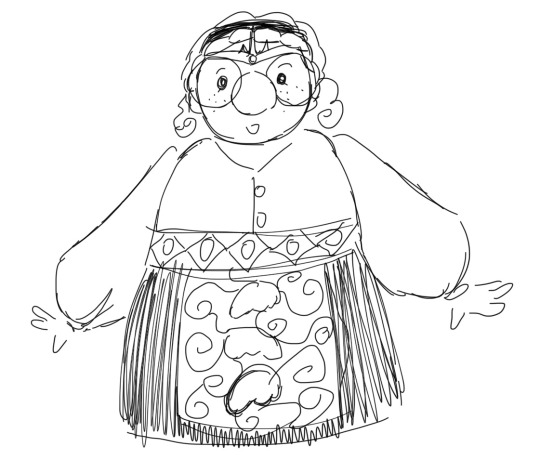




I got all the emojis ppl sent for Daisy
I was planning to clean these up more but my iPad tablet pen’s mad at me & I couldn’t get into the groove on my laptop so we’ll do with these 😊
We have Halloween costume, royalty fit (based on Scandinavian outfits bc she’s the Psiking’s little girl), dressed as a cartoon character (Alice from Alice in Wonderland), funny tshirt/pj’s, dressed as another oc (Poppy), and mlp character which I don’t think was an emoji in the ask meme but I’ll allow it
Also, bonus pic of bitty baby daisy in a flower pot bc you know her dads had her posed in these kinda at the mall photo shoots and keep the pics on their person at all times

ID #1: Daisy in Dorothy Gale’s blue checkered dress and ruby red slippers, holding a basket filled with candy. End ID.
ID #2: Daisy in a dress inspired by traditional Scandinavian folk dresses. End ID.
ID #3: Daisy in the dress and apron from Disney’s Alice in Wonderland. End ID.
ID #4: Daisy yawning in an oversized shirt with a mountain range on it with text that says “I have the Range”. End ID.
ID #5: Daisy wearing a shirt that says “Whispering Rock Psychic Summer Camp”, a big hair bow, a pleated skirt and Mary Jane shoes with socks. End ID.
ID #6: Daisy as a small glasses wearing kirin from My Little Pony: Friendship is Magic. End ID.
ID #7: Daisy as an infant sitting in a big decorated flower pot. There are flowers around the base, and she is holding flowers while wearing a petal shaped bonnet. End ID.
#sketches#fan char#psychonauts#psychonauts 2#aus#daisy fbz#it feels like it’s been 5ever since I posted Art but I think that’s only cause I been busy recently!!
81 notes
·
View notes
Text

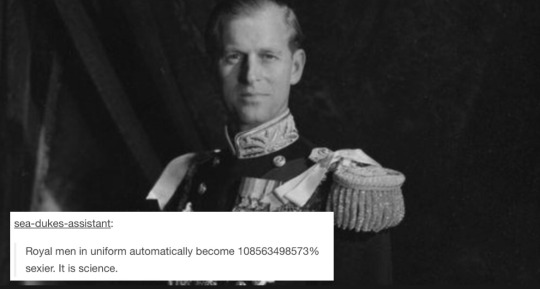

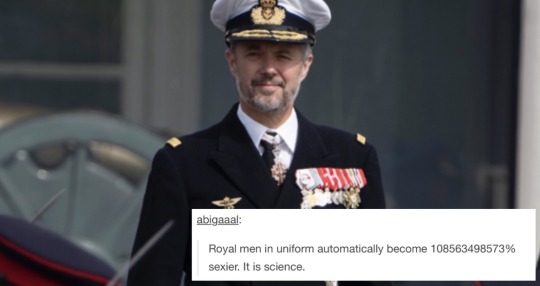
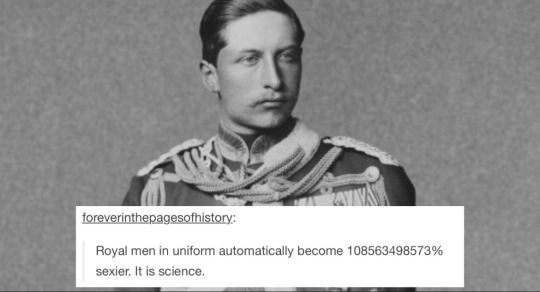
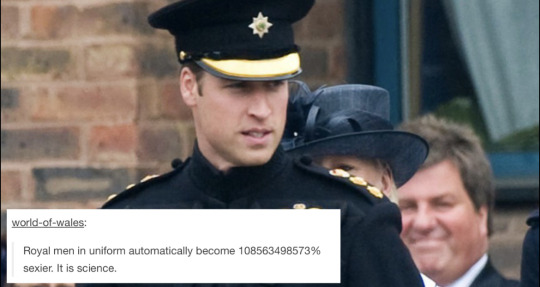

royal men + text post memes (insp.)
#i asked a few of my friends which royals they thought looked the hottest in uniform and was going to surprise some others#but some of my friends said the same person and i didn’t want to leave anyone out that also liked them#so i was gonna just make them all say duchessofvolterra but that’s boring so i’ll do more in the future to have all of my friends!#maybe i’ll try again with royal women in uniform#and give anne her own post ofc so i can misquote multiple fannes#king felipe vi#prince philip#prince william#prince of wales#tim laurence#crown prince frederik#kaiser wilhelm ii#prince carl philip#spanish royal family#british royal family#danish royal family#swedish royal family#scandinavian royalty#prussian royal family#glowingatdawn#sea-dukes-assistant#leonisandmurex#abigaaal#foreverinthepagesofhistory#world-of-wales#sophiebernadotte#royal fandom#text post memes#my edit#my gifs
183 notes
·
View notes
Note
Was the difference between the scandinavian countries greater or smaller or what you participated when you visited? Asking because i’m curious as to how different a non scandinavian percieves us lol
To be quite honest? We don't hear a lot about the Scandinavian countries here in the US—nothing political or social, anyway. The most we ever hear about is "that's where the vikings come from!"
Because of this, I didn't have much in the way of expectations at all when I visited. But there were definitely a few things that surprised me:
1. Y'all are like 50 years ahead of us in terms of technological and certain forms of social progression.
The US is not a place that cares about the enrichment or the mental wellbeing of its people, unless corporations can gain money from it. When I landed in Denmark, the first thing I noticed was a clear lack of intrusive advertisements everywhere. In the US, we have brands, signage, billboards, and all kinds of stupid commercial crap that just clogs the landscape and feels very hostile to live in.
You think most of the US looks like the San Francisco or the New York City you see in the movies? Think again. Whenever I run errands I drive down roads that look like this:

This is what you get in the US when you live anywhere that isn't in the middle of a large metro area, by the way.
The Scandinavian countries, on the other hand, have a lot of bike paths, green spaces, and empty clean walls. Additionally, there were no big fuckoff billboards littering the sides of highways. And there were SO MANY electric vehicles! It was refreshing to see, but it also made me realize just how subpar our standard of living is compared to other developed countries.
For my US peeps, this is what an average freeway in Denmark looks like:

Yeah.
2. It's geographically smaller than I expected
Driving North from Denmark, through Sweden, and up into Lom in Norway and back down to Bergen on the west coast didn't take very long. I'd say it takes about as long as driving from Chicago to New York would take. Which is still a fair amount of time, but nowhere NEAR the amount of time it takes to drive across the US. I'm not sure where it came from, but for some reason I had this idea that the Scandinavian countries would feel enormously vast and expansive in the same way, like, British Columbia or Alaska does.
But the vastness of Scandinavia seems more like an illusion compared to other places I've been to. It feels more compact than it is actually massive, mostly due to the fact it's hard to navigate anywhere in a straight line lol.
On top of that, the mountains in Norway are also much smaller and rounder than the mountains I grew up seeing—the Rockies—which are roughly TWICE the height of Norway's mountains. Jotunheimen was a completely new experience for me not because I've never been up mountains before, but because the nature of its peaks compared to the Rockies was very different.
Here's a photo of the Rockies as I know them (some of it is more desert-like or forested depending on where you are):

And here's a photo I took entering into Jotunheimen:

(Unfortunately it was too cloudy to get a photo of the landscape while on top of the mountains, so here's another from google):

Very different.
3. It was very interesting to see the Scandinavian countries' relationships with their royalty, especially Sweden.
In the US, we have politicians and we have celebrities, and one doesn't at all serve the social function of the other. But in Sweden especially, the royalty is seen as almost a combination of both? They seem to influence both politics AND popular culture in a way. For example, I was told Sweden bases its fashion trends off of what the royal family wears, which are things that look pretty conservative and old-fashioned to my eyes.
Here in the US, you actually never see fashion trends appear based on what our politicians are wearing. But this may also be why our fashion is a lot more "out there" compared to Sweden. Because our celebrities have no obligation to perform as social or political leaders, they have no obligation to dress bureaucratically.
There were a few other things that surprised me—how green and verdant it was, how grass and straw roofs are still in-use, the fact everyone there knows English to some extent—but these three things above were the biggest I think.
122 notes
·
View notes
Text
1330
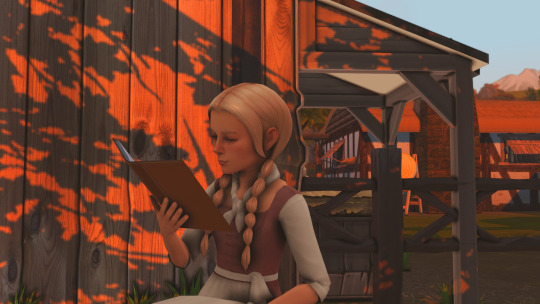

Charlotte really enjoys reading and helping her father in the garden now and Adrian is thankful for all the help he can get. On night while they're out in the field Richard asks his father for advice. He wants to ask for Beth's hand in marriage but he's a little conflicted. "I want to start my own life, but I feel so familiar here and I don't want to leave you all alone with the fields." Adrian responds that he would be honoured to have Beth live with them so they can continue what he built up with his bare hands.

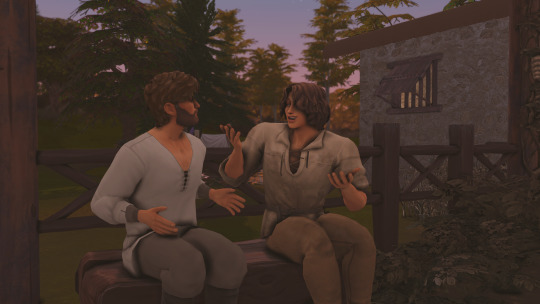
Richards mind is set now with the approval from his father and so one day while out on a walk he proposes marriage to his childhood friend with a ring he made on his anvil.

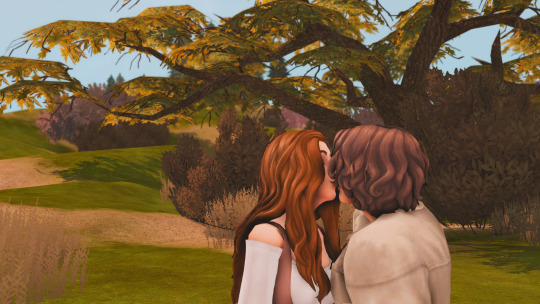
Beth is elated and they tell her father right away.
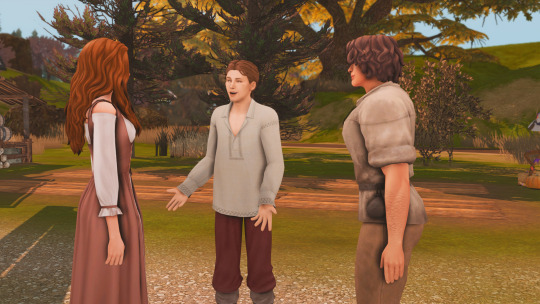
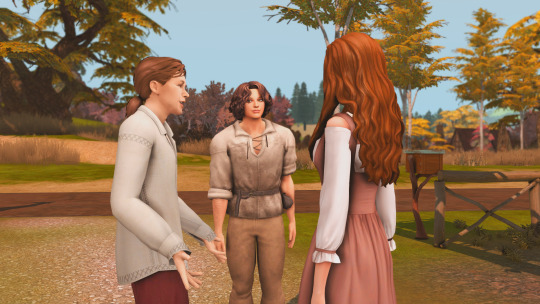
His uncle Harold is also very pleased about the news and about the wedding invitation. The twins are also excited to see their extended family again when the wedding takes place at the dawn of the new year.


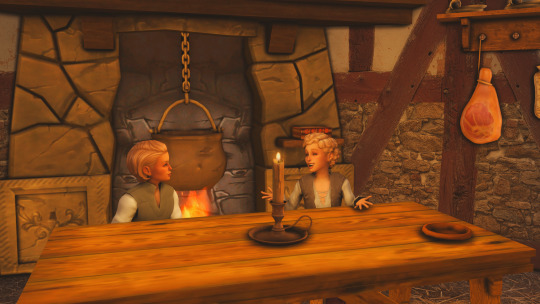
Over the sea in Bergen there's also good news. Sabrina and Sven are expecting their first child! Sven is very happy about it but Sabrina is not sure she's ready to be a parent yet.... especially the mother of a possible heir of scandinavian royalty. But Sven reassures her, that he will not let his family relations get in the way of their bliss.


8 notes
·
View notes
Photo

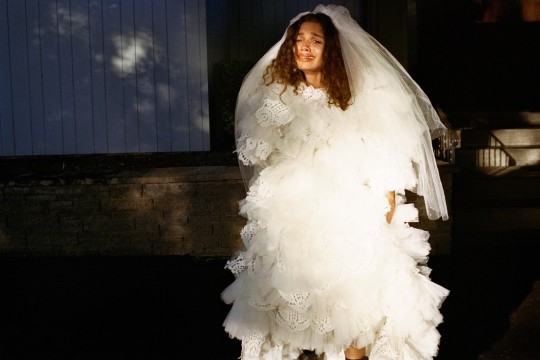








Scandinavian and Eastern European
#Helena Howard#royalty#actress#cute#cutie#Eastern European#Queen#Scandinavian#woman#brunette#gorgeous#fine#fit#sexy#beauty#beautiful#lovely#long hair#pretty#thighs#curly hair#body#tight
2 notes
·
View notes
Note
I love all your royal posts! You don’t let your biases get in the way of your takes and that’s rare to find in royal commentary. As someone who has recently dove back into royal tumblr (and wooooaaahhhh it looks different than it did) what are some things that draw you into observing? I am fully aware that they are not really fit for purpose in the 21 century without much more investigation and legit reporting on what exactly royalty does and perpetuates in the modern day- but I do find the family dynamics and the fashion interesting. Not keep monarchies interesting lol but interesting to talk about.
Aw thank you! I definitely do my best to be fair.
I've always enjoyed the royal splendor, fashion, family dynamics, and the historical aspect of royal watching, and obviously the gossip. My views on royalty have definitely changed over the years, it's become a bit closer to hate watching at this point (well for the BRF at least). But at least the Scandinavian and Dutch royals seem self-aware and know that they don't really have a place in our modern world, but they still do their best.
8 notes
·
View notes